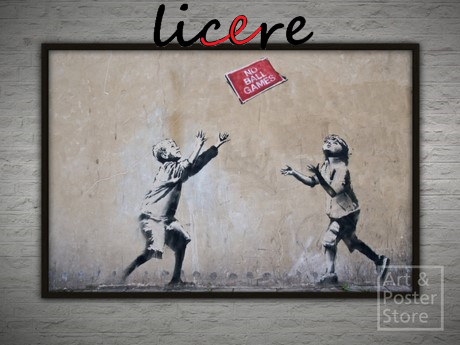The Leisure of the Person with Physical Disability in Belo Horizonte
A Preliminary Study
DOI:
https://doi.org/10.35699/1981-3171.2019.16272Keywords:
Leisure Activities, Disabled Person, Social Participation, BarriersAbstract
The objective of this research were to understand the ways in which people with physical disabilities engage in Sports and Leisure activities in the city of Belo Horizonte (MG). Participants of this qualitative cross-sectional study included 10 people with physical disabilities, wheelchair users, selected by the snowball method. The participants were interviewed and the interviews analyzed through the interpretative and dialogical construction of the speeches. The results indicate that people with physical disabilities, in Belo Horizonte, face several barriers to participate in leisure activities. We can conclude that the deficiency is not only related to the physical attributes of the people, but also refers to the environment in which they are inserted. The results can be useful for evaluation and creation of public policies of Sports and Leisure, in order to question and to deepen the knowledge on the subject through a regional and national perspective.
Downloads
References
ALMEIDA, S, P. A; BARTHOLOMEI, C. L. Acessibilidade de “cadeirantes” no espaço de ensino público: UNESP, campus de presidente prudente–sp. Revista tópos, v. 5, n. 2, p. 21-46, 2011.
ARAÚJO, P. F. D. Desporto adaptado no Brasil. São Paulo: Phorte, 2011.
BADIA, M. et al. Relationships between leisure participation and quality of life of people with developmental disabilities. Journal of applied research in intellectual disabilities: JARID, v. 26, n. 1995, p. 533–45, 2013.
BRAJŠA-ŽGANEC, A; MERKAŠ, M; ŠVERKO, I. Quality of life and leisure activities: How do leisure activities contribute to subjective well-being? Social Indicators Research, v. 102, n. 1, p. 81 -91, 2011.
BRASIL. Lei nº 13.146, de 06 de Julho de 2015. Dispõe sobre o “Estatuto da Pessoa com Deficiência”. Brasília, 2015
CASSAPIAN, M. R., RECHIA, S. Lazer para todos? Análise de acessibilidade de alguns parques de Curitiba – Pr. Cad. Ter. Ocup, UFSCar, São Carlos, v. 22, n. 1, p. 25-38, 2014.
COLEMAN, J. S. Relational analysis: The study of social organizations with survey methods. Human Organization, 17:28–36, 1958.
CORRALES C. M. S.; CASTRO, E. D. Passear e Participar: O Lazer Ampliando a Circulação Social de Pessoas Com Deficiência. Licere, Belo Horizonte, v.19, n.3, set/2016.
DUARTE, C. R; COHEN, R. Acessibilidade como fator de construção do lugar. In: LOPES et al. (Orgs.). Desenho Universal: caminhos da acessibilidade no Brasil. São Paulo: Ed. Annablume, P. 81 – 94 .2010.
ELIAS, N.; DUNNING, E. Memória e sociedade a busca da excitação. Lisboa: Difel,1992.
FERNANDES COSENZA, Izabela, CROSARA DE RESENDE, Ana Paula, A Cidade e as Pessoas com Deficiência: Barreiras e Caminhos. Sociedade & Natureza [en linea] 2006, 18 (Diciembre-Sin mes): [Fecha de consulta: 8 de abril de 2019] Disponible en:http://www.redalyc.org/articulo.oa?id=321327189002 .
FERREIRA, C. L. Trabalho, tempo livre e Lazer. Ponta Grossa: [s.n], 2010.
FOGANHOLI, C; JUNIOR, L. G. Lazer de pessoas com deficiências: significando, aprendendo e ensinando. Licere, Belo Horizonte, v.18, n.2, jun/2015.
GABRILLI, M. Guia sobre a Lei Brasileira de Inclusão. [s.l: s.n.].
GOODMAN, L. Snowball Sampling. Annals of Mathematical Statistics, v.32, n.1 , p.148-170. 1961.
IBGE. Censo Demográfico 2010 - características gerais da população, religião e pessoas com deficiência. Rio de Janeiro: IBGE, 201 2. Disponível em: http://www.ibge.gov.br. Acesso em: 20 jun. 2016, v. 1, 2012.
KUBINSKA, Z.; BERGIER, B.; BERGIER, J. Usage of leisure time by disabled males and females from the Lublin Region. Annals of Agricultural and Environmental Medicine, v. 20, n. 2, p. 341 –345, 2013.
KUVALEKAR, K. Quality of Life among Persons with Physical Disability in Udupi Taluk: A Cross Sectional Study, v. 4, n. 1, 2015.
LEITE, L.P; MARTINS, S.E.S.O. Fundamentos e estratégias pedagógicas inclusivas: respostas às diferenças na escola. São Paulo: Cultura Acadêmica, 2012.
LIMA, R. M. C.; RIBEIRO, P. R. Q.; TONELLO, M. G. M. Percepção da qualidade de vida por pessoas com deficiências físicas praticantes e não praticantes de atividades de lazer. Licere, v.15, n.4, 2012.
MARCELINO, N. C. Lazer e educação. Campinas: Papirus, 1 987.
MARCELLINO, N. C. Estudos do lazer: uma introdução. Campinas: Papirus, 2006.
MAZZOTTA, M. J. S; D'ANTINO, M. E. F. Inclusão social de pessoas com deficiências e necessidades especiais: cultura, educação e lazer. Saude e sociedade, São Paulo, v. 20, n. 2, p. 377-389, 2011.
OECD. OECD Guidelines for the Testing of Chemicals. Organization for Economic, 2012.
OLIVEIRA, L. M. B. Cartilha do Censo 2010–Pessoas com deficiência. Brasília: Secretaria de Direitos Humanos da Presidência da República (SDH/PR), Secretaria Nacional de Promoção dos Direitos da Pessoa com Deficiência (SNPD), Coordenação-Geral do Sistema de Informações sobre a Pessoa com Deficiência, 2012.
PAPPOUS A. S. Post-Event Volunteering Legacy: Did the London 2012 Games Induce a Sustainable Volunteer Engagement? Sustainability, 8, 1221. 2016.
REY, F.L.G. Pesquisa qualitativa e subjetividade: Os processos de construção da informação. São Paulo: Pioneira Thomson Learning, 2005.
ROSA, A. C. Compreendendo o paradigma da inclusão. Revista Educação Especial, Santa Maria, n. 29, 2007.
ROSCOCHE, L. F. Trabalho, Lazer e Religião. Licere, Belo Horizonte, v.19, n.2, jun/2016.

